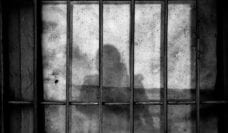Nearly 2.2 million adults were confined in US prisons and jails at the end of 2016. Beyond the prison walls, many of them are parents or siblings of young children. An estimated 7% of children, over 5 million, have had a parent go to prison or jail.
A large and growing body of evidence shows that children who experience a family member’s incarceration are at greater risk of experiencing negative health outcomes during both childhood and adulthood. Family member incarceration can create conditions of toxic stress, resulting in lasting changes to the child’s mental and physical health. Individual studies have found that children are more likely to experience depression or obesity and engage in risky behaviors, such as smoking or using illicit drugs, that could lead to poor health in the future.
As adults, they are at greater risk of depression, liver disease, heart disease, and obesity. Studies also find that adults who experienced family member incarceration during childhood are more likely to engage in risky health behaviors such as smoking.
These negative health effects impose costs on children and their families and are an indirect cost of incarceration. Previous work has limited its focus to family costs directly tied to the incarceration such as court fees and costs of maintaining contact, and costs to governments to incarcerate people. On average, states spend $33,274 per incarcerated person each year. But this is not the total cost of incarceration as it excludes indirect costs.
Beyond the prison walls, many of them are parents or siblings of young children. An estimated 7% of children, over 5 million, have had a parent go to prison or jail.
Indirect costs of incarceration—employment instability following reentry or forgone household income—have been identified but often are not monetized. Our research team set out to monetize indirect costs due to poor health.
We recently synthesized research to identify common health effects for people who experienced a family member’s incarceration during childhood and estimated the cost to treat those effects. The outcomes of our meta-analysis suggest that the experience of familial incarceration increases the odds of a person having poor health. Specifically, the odds of poor physical health are increased by 47%, and the odds of poor mental health are increased by 123%. The odds of engaging in risky health behaviors are increased by almost 200%. Treatment costs for these poor health outcomes amounted to $436 million during childhood and $22.5 billion during adulthood annually. This indirect cost amounted to 27% of the nearly $85 billion spent directly by governments on corrections in 2014.
Familial incarceration may be a harmful event for some children, a beneficial event for others, or an inconsequential event for still others. Future research should interrogate which factors help to explain differences in how people react and whether those differences exacerbate health disparities.
Criminal justice reform can help to reduce the number of children experiencing family member incarceration. Financial support for children to visit incarcerated family members can help them maintain or strengthen relationships and thus may reduce toxic stress exposure. Affordable and comprehensive health insurance is also critical. While children with incarcerated family members have greater health care needs than other children, they are less likely receive care; reducing the cost through insurance can help to remove this barrier.
Photo by Matthew Henry on Unsplash















